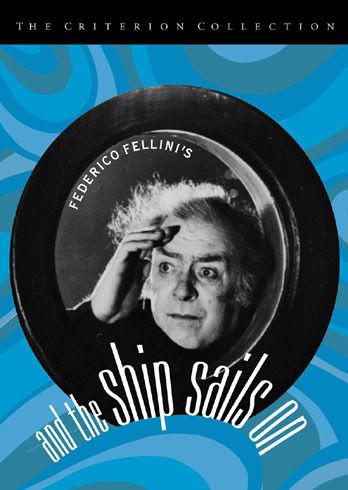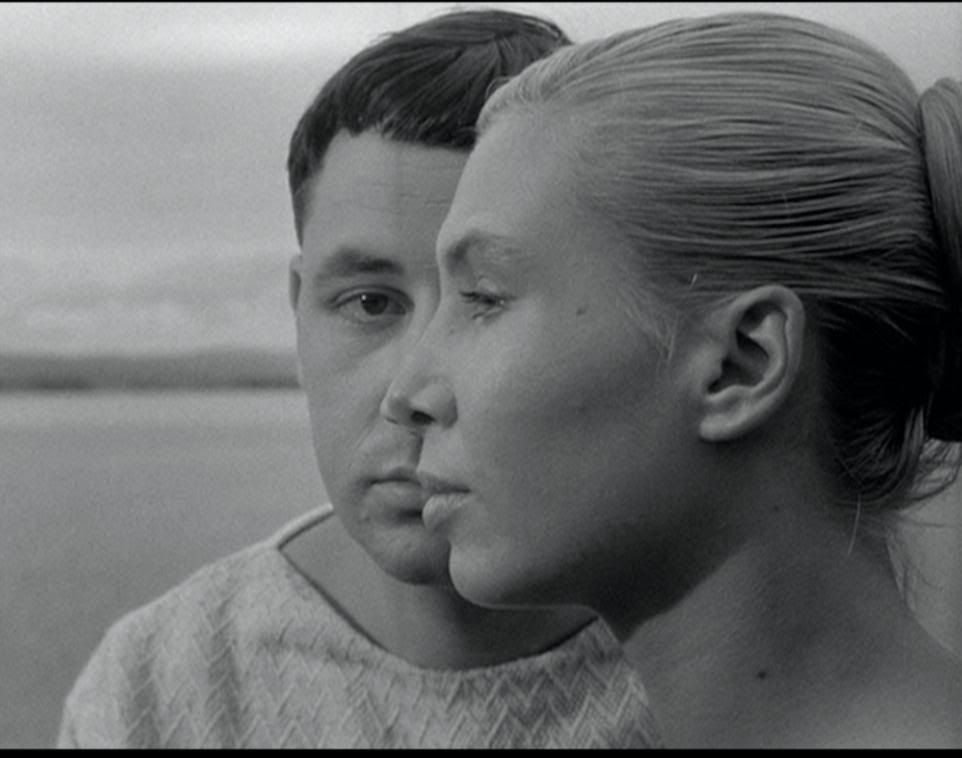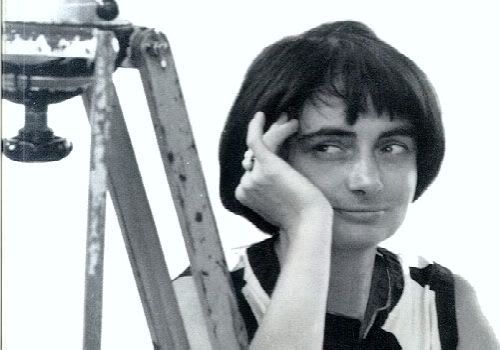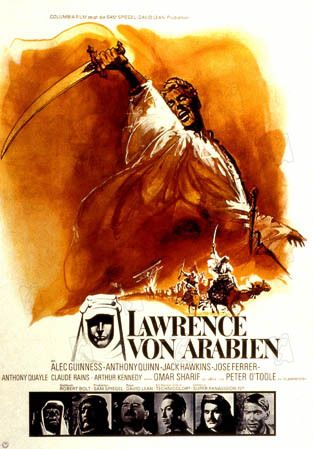Director: Federico Fellini
Country: Italy
I'm feeling kind of nostalgic these days. This is probably because, for the first time since I can remember, I'm not getting ready for the big trip back to school like nearly everyone else around me. So, it's somewhat fitting for me to next write about a film by Federico Fellini, who a) is a master of depicting memories and nostalgia on film, and b) I first discovered in my first year at U of T (via the wonderful
8 1/2, which kept pleasantly cropping up in various classes throughout my later years of study and is still one of my favorite films).
And The Ship Sailed On is one of Il Maestro's later efforts, and you can tell that this film is echoing a style that has already been constructed and perfected through his previous masterpieces.
 This film is very much exemplary of the kind of work Fellini produced in the later half of his career. While these films were filled with eye-popping visual compositions and massive amounts of imagination, they just didn't have the same sense of emotional involvement or intimacy that his earlier films did. As Satyajit Ray once explained (paraphrased here), this late-career Fellini was still very admirable and inspirational, but only as a cinematic technician.
This film is very much exemplary of the kind of work Fellini produced in the later half of his career. While these films were filled with eye-popping visual compositions and massive amounts of imagination, they just didn't have the same sense of emotional involvement or intimacy that his earlier films did. As Satyajit Ray once explained (paraphrased here), this late-career Fellini was still very admirable and inspirational, but only as a cinematic technician.
As with other late Fellini films, there are no real main characters to really grow attatched to. Instead, the film follows a strange (and, I have to admit, often downright creepy) assortment of passengers who are gathered on an ocean liner to scatter the ashes of Edmea Tetua, a famous opera singer, off the coast of the island Erino. They mainly consist of other prominent opera singers, pretentious intellectual types and the plump, medal-laden Grand Duke of Herzog and his entourage. As in Fellini's Amarcord, the audience is given a polite, well-meaning guide who frequently takes time to contribute his commentary on whatever is happening at the given moment. All of these curious people are amusing to behold; just don't expect to be given an intimate emotional profile or strong connection to any of them during the film. To many viewers, they will only appear as a bunch of goofy kooks and only remain as such until the final title card. Those seeking more well-written and sympathetic main characters will be more than rewarded by some of Fellini's earlier efforts such as La Strada, Nights of Cabiria and 8 1/2.

Of course, the artificial nature of the film is made obvious by the fact that Fellini shot it almost entirely on the soundstages of Cinecitta studios, as was also his regular practice throughout the later stages of his career. There's definitely a certain artistry to the ways in which Fellini would replicate settings and special effects in this way; everything has a unique, theatrical look to it. The sea is a rolling, twinkling blue canopy suspending immobile lifeboats. A warship that appears late in the film is a massive iron fortress with stiff black clouds perpetually surrounding its smokestacks (both it and the ocean liner are obviously models). The film's artifice is even directly revealed at the end of the film in a segment that shows us the machinery and crew within the Cinecitta studio behind all the fantasy. It's a move not too dissimilar from a magician suddenly revealing the secret of his famous optical illusion, but with Fellini, the magic doesn't come from being fooled, but instead from the effort and craftsmanship that went into his tricks.
And The Ship Sailed On, again, like Amarcord, has a fairly straightforward, episodic structure to it. Along with the ocean liner guests, the viewer is treated to a variety of spectacles along the voyage, including:
- A concert given entirely via water glasses.
- A singing contest between the various sopranos within the ship's furnace, showcasing not only the range of their voices, but also the cavernous insides of their mouths.
- A giant rhinoceros who is diagnosed as suffering from lovesickness.
- The surprise arrival of a group of Serbian refugees who occupy part of the ship's deck and give a musical performance of their own (and eventually attract the attention of the mentioned battleship).
All of these episodes and more show that Fellini may have gradually changed his filmmaking methods as his career progressed, but his imagination lost none of its wild inventiveness.

Throughout the film, the ship's guests constantly tell stories and anecdotes, very much giving the impression that their lives, albeit fictional, extend so much more beyond what Fellini gives us, which is a small, fleeting glimpse; a mere portion of the whole. Perhaps this is why his later films have been seen as more distant and unapproachable - in his earlier films, his main characters had well-written, fully-realized arcs that consisted of highly significant (if not the most significant) events in their lives. The sightseers of Amarcord and And The Ship Sailed On, on the other hand, go from episode to episode existing only as such, merely along for the ride with the rest of the audience, undaunted by emotional crises and moral dilemmas. In terms of film viewing, this method of storytelling is an acquired taste (when I first saw it, I didn't really think much of the carnivalesque Amarcord, but I'm gradually warming up to it bit by bit), but those who try hard enough or let themselves should certainly be able to take their share of pleasure away from it.
Though it's not one of Il Maestro's greatest films, And The Ship Sailed On is still a highly enjoyable ride through the weird and wacky world of his mind, and certainly worth checking out at least for long-time Fellini fans. More casual viewers can take their chances, but would most likely benefit from warming up to some of his other films first; La Strada, La Dolce Vita or 8 1/2 would all be good places to start.
P.S. Something should probably be said about the music in this film. Sadly, Fellini was unable to work with his regular collaborator, the legendary Nino Rota, due to his death a few years previous. However, he made do with a smattering of well-known classical music, including Strauss' Blue "2001" Danube Waltz and a personal favorite of mine, Claude Debussy's Claire de Lune. Though it's a sort of "greatest hits" collection, it is nonetheless used fairly well throughout the film.


















 This year, Varda will be visiting the Toronto International Film Festival to present her new documentary,
This year, Varda will be visiting the Toronto International Film Festival to present her new documentary,  This film is very much exemplary of the kind of work Fellini produced in the later half of his career. While these films were filled with eye-popping visual compositions and massive amounts of imagination, they just didn't have the same sense of emotional involvement or intimacy that his earlier films did. As Satyajit Ray once explained (paraphrased here), this late-career Fellini was still very admirable and inspirational, but only as a cinematic technician.
This film is very much exemplary of the kind of work Fellini produced in the later half of his career. While these films were filled with eye-popping visual compositions and massive amounts of imagination, they just didn't have the same sense of emotional involvement or intimacy that his earlier films did. As Satyajit Ray once explained (paraphrased here), this late-career Fellini was still very admirable and inspirational, but only as a cinematic technician.

 The movie is extremely simplistic in design and tells its story at its own steady pace - not unlike Schultze himself. The film's main strength lies in all the little details of character and everyday life that lie scattered throughout its frames, just waiting for the viewer to pick up on. It's not out to shove a great, lofty message down people's throats; it just follows Schultze on his travels (eventually finding him navigating through the waters of Louisiana) and invites you to come along. As with all proper adventures, he meets a wide variety of people and learns more about himself as a person than he ever would have back in his home town.
The movie is extremely simplistic in design and tells its story at its own steady pace - not unlike Schultze himself. The film's main strength lies in all the little details of character and everyday life that lie scattered throughout its frames, just waiting for the viewer to pick up on. It's not out to shove a great, lofty message down people's throats; it just follows Schultze on his travels (eventually finding him navigating through the waters of Louisiana) and invites you to come along. As with all proper adventures, he meets a wide variety of people and learns more about himself as a person than he ever would have back in his home town.

 Of course, a major part of what makes this epic film so, well, epic, is the stunning cinematography by F. A. Young. Besides being devastatingly beautiful, the majestic desert settings are presented as monumental, ultimately indifferent forces of nature where men and camels are shrunk to the size of fleas and death is often (but not always) as simple as a camel suddenly missing its rider.
Of course, a major part of what makes this epic film so, well, epic, is the stunning cinematography by F. A. Young. Besides being devastatingly beautiful, the majestic desert settings are presented as monumental, ultimately indifferent forces of nature where men and camels are shrunk to the size of fleas and death is often (but not always) as simple as a camel suddenly missing its rider.
 A chilling sense of paranoia runs through the entire film. Nothing is straight-up explained right away, and the viewer has to gradually piece together what Otilia and Gabita are up to and why they are so nervous doing it. Even little things such as negotiations with hotel clerks and Otilia's promise to come to her boyfriend's mother's birthday celebration (a well-played sub-plot) are rendered as troublesome obstacles in the way of the women's plan. The final touch being the drab, gray world of stark streets and shadowy alleyways (particularly terrifying in the final moments of the film), 4 Months is positively Nineteen Eighty-Four-ish, and this Ceausescu-era Romania could just as easily be Winston Smith's Oceania, with agents of Big Brother lurking around every corner.
A chilling sense of paranoia runs through the entire film. Nothing is straight-up explained right away, and the viewer has to gradually piece together what Otilia and Gabita are up to and why they are so nervous doing it. Even little things such as negotiations with hotel clerks and Otilia's promise to come to her boyfriend's mother's birthday celebration (a well-played sub-plot) are rendered as troublesome obstacles in the way of the women's plan. The final touch being the drab, gray world of stark streets and shadowy alleyways (particularly terrifying in the final moments of the film), 4 Months is positively Nineteen Eighty-Four-ish, and this Ceausescu-era Romania could just as easily be Winston Smith's Oceania, with agents of Big Brother lurking around every corner.







